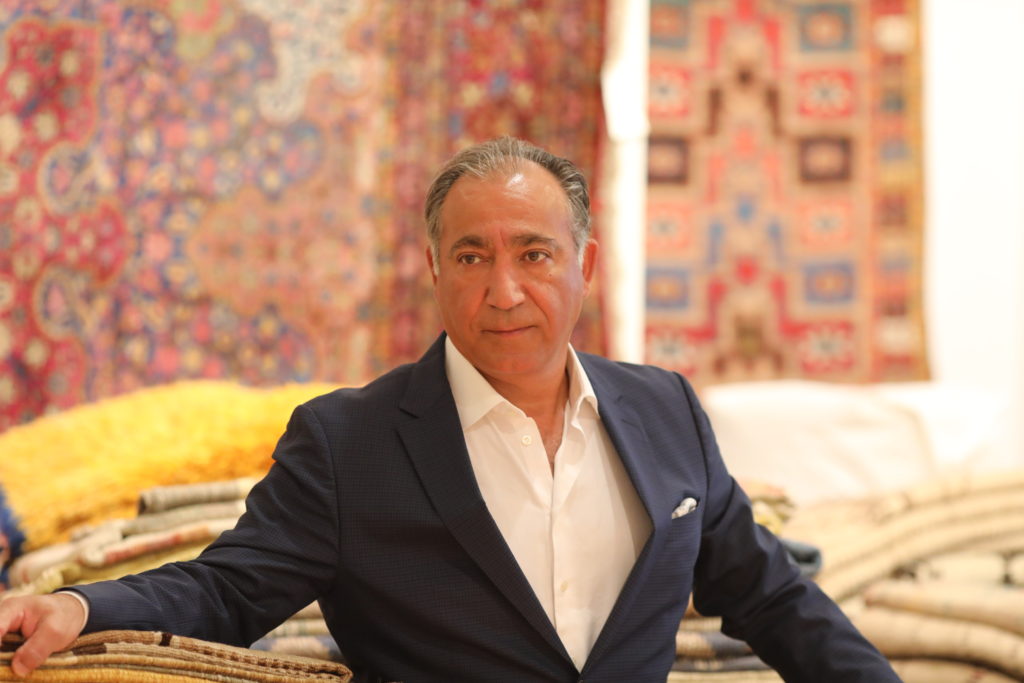
40 Years in Antique Rugs: a Discussion with Jason Nazmiyal
It’s funny how the incidental nature of Zoom can influence relationships, even one cultivated within the constrained hour-long parameter of a video interview. When I joined the call to talk to Jason Nazmiyal of Nazmiyal Antique, Vintage, and Modern Area Rugs, he noticed (in the wall-sized square visible behind me) that I had a Salvador Dalí etching. Some minutes later, as we discussed how he sources his antique and vintage collection, he returned to my etching: “How many times do you think your Dalí changed hands, before it ended up in yours?”
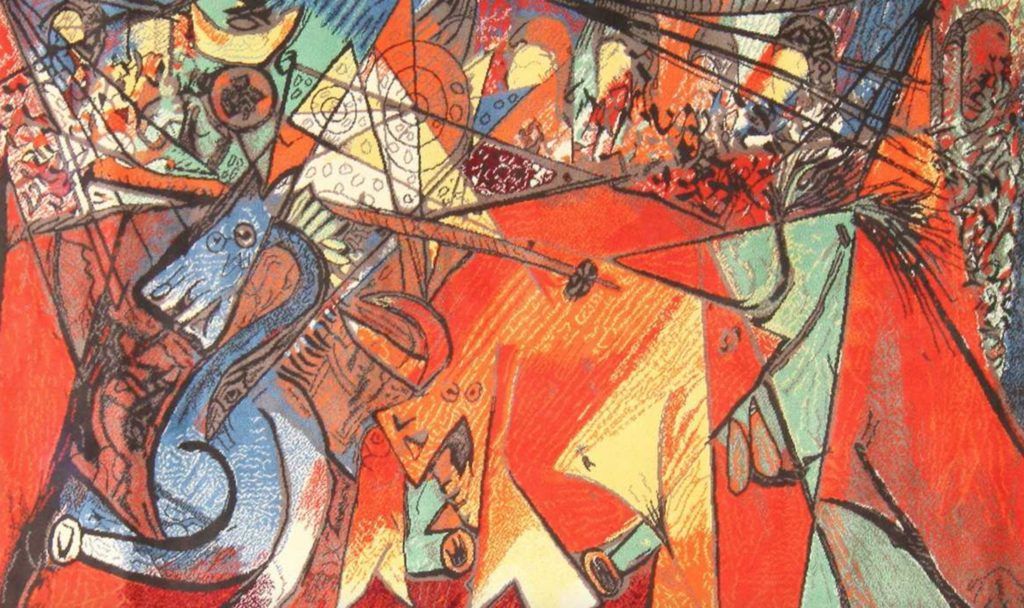
Vintage Art Rug by Ege Carpet. I couldn’t find a Dalí rug on Nazmiyal’s Site, but I did find a Picasso!
The Art and Business of Collecting Antique Rugs
The comment was an integral element in the hour-long education I received on the business of antique and vintage rugs. My mind flush with visions of hard-scrabble journeys to far-flung locales and wind-swept steppes, I had asked Jason where he had obtained most of his inventory. The answer surprised me: “Through years of contacts I’ve created with dealers in Paris, London, Milan, Chicago, California…”
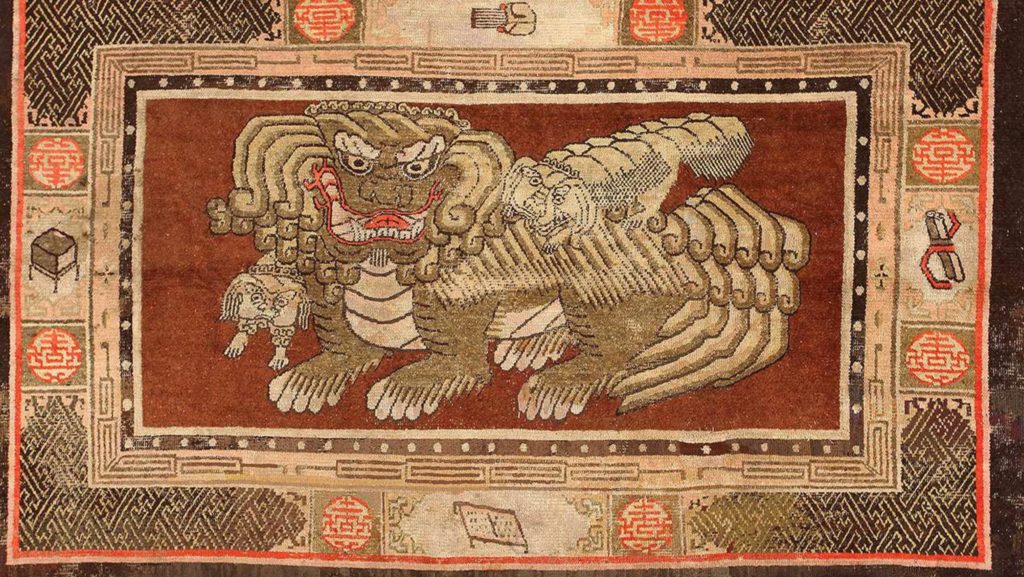
A rare 17th. Century Chinese Fu Dog Rug. Even family pets are represented in Nazmiyal’s extensive inventory!
This isn’t to say that Nazmiyal’s 40 years in the business have been travel-free. To the contrary, especially in the early days, he would often travel to meet with dealers and examine rugs. “I would get up and fly from New York to London, meet with the dealer, and fly home the same day.” But his career has been mostly devoid of challenging journeys to tribal locales in order to seek out artisanal rugs and buy them first hand. Just as with my Dalí etching, the huge inventory (at more than 3,000 fine and decorative pieces, one of the largest collections in the world) is mostly comprised of rugs that have had many owners: “I’ve never bought one rug from Persia: Buying rugs is analogous to buying art. 99% of my rugs are over 100 years old, so by the time I get them they may have changed hands up to five times.”
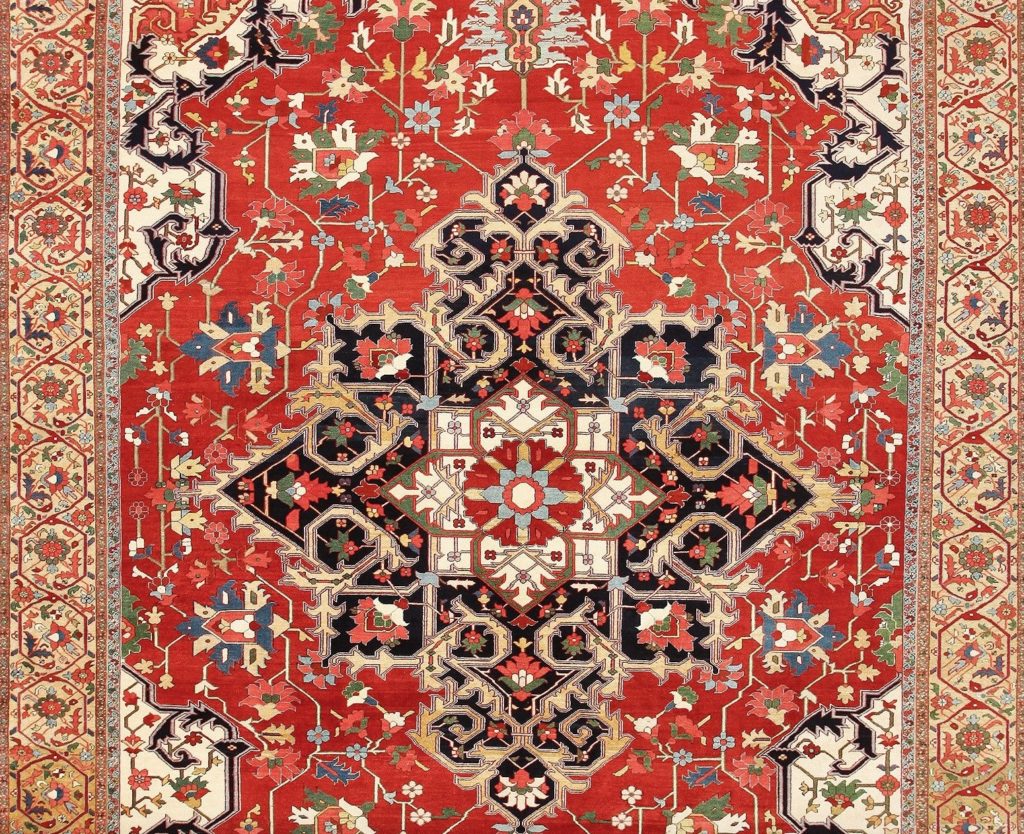
Detail of an antique Persian Serapi rug: “the elegant and timeless character stands as a testimony to the artistry and talent from this area of the world”
Not that an hour is really enough time to get to know someone, but my brief discussion with Nazmiyal left me with a very palpable sense of his ethos: of a man with a mind for business and a heart for art; of a well-practiced and hard-won expertise; a reputation for building solid relationships based on quality and trust; and an intuitive sense of the trajectory of the consumer experience.

Antique Persian Silk Kashan Judaica Rug. Nazmiyal says that every rug tells a story. This one speaks of Talmudic texts shrouded in mystery—and the tremendous skill of its 19th century weaver.
From Iran to NYC
Nazmiyal came to New York from Iran in the dawning days of the Iranian revolution. With that turmoil came the collapse of the Iranian currency (“My father’s life savings was about enough to pay for one semester of college.”). Necessity being the mother of invention, his attention turned from school to making a living. He pumped gas and waited tables before connecting with a cousin who was in the rug business. Their retail locale in Short Hills, New Jersey was a 700 square foot shop in a mall, so they kept mall hours, working nine to nine every day of the week: “We faced lots of restrictions in not knowing the culture, or speaking the language perfectly, of not understanding American taste and direction. So we had to learn to maneuver around these challenges.”
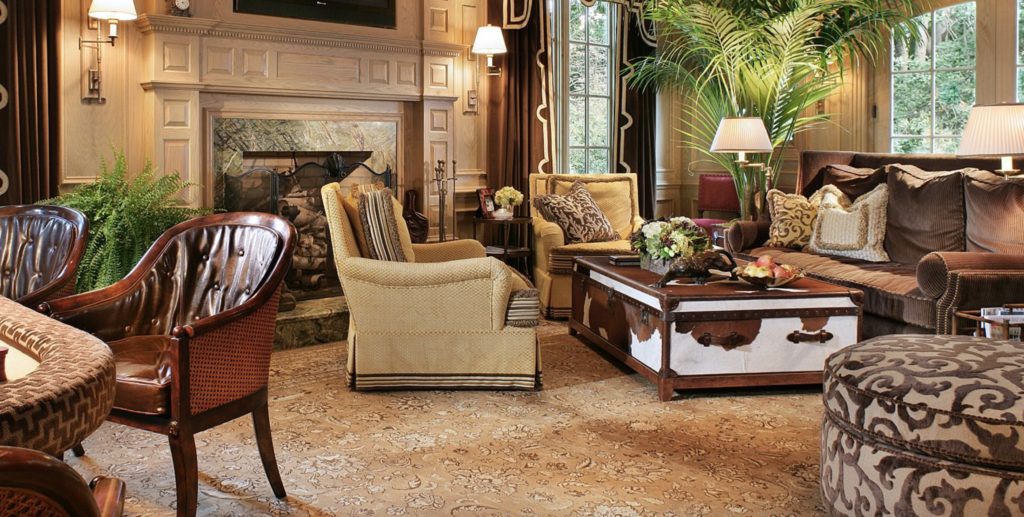
An antique Persian Sabriz rug highlights the muted tones in this upscale living room.
Nazmiyal had no particular education in weaving or craft or art, so he had to educate himself. Through the daily exposure to the different rugs, and through his studies of the photos and writing of a well-published dealer in Europe, he was able to develop an expert eye: “I grew to love the art, the color, and especially the primitiveness. My success works around color and design and that’s the most important element in buying and selling antique rugs.”

An antique Persian Malayer rug showing the colors and subtle gradients of earth, sky, and water
The Nature of Primitive and Antique
For the first couple of decades in the business, Nazmiyal operated several retail shops. During this time, he would purchase much of his inventory wholesale from N.Y.-based manufacturers, who were designing and manufacturing rugs using labor from India and China. Herein Nazmiyal upturned my romantic idea of the intrepid collector scaling mountainous heights to find rugs: “These rugs are being produced for the American market. The weavers are hired on a daily basis and have nothing to do with the design of the rug. 99% of the rugs that are sold in America the weaver has nothing to do with it… it’s being dictated by the color and designs made by the manufacturer… That’s why antique rugs are so valuable: they are one-of-a-kind pieces, and the demand for them is now greater than ever because people are tired of commercial, mass-produced rugs.”

An antique Khotan rug from East Turkestan. Nazmiyal can determine the provenance of each rug solely through visual examination.
Nazmiyal’s affection for these primitive rugs—for which the weaver is the artisan making all the creative decisions with nary a thought for the current vogue in Paris or New York—provoked an evolution in his business from retail to collecting, in which capacity he uses his expertise, his network of relationships, and his discerning eye to source antique rugs, restore them if necessary, and offer them to his dedicated customer base.
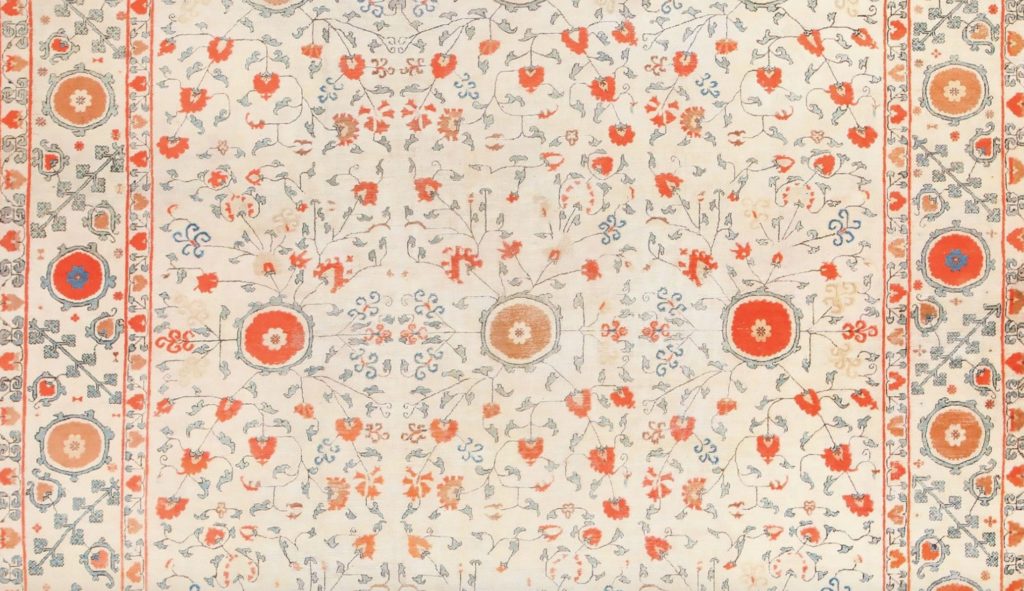
Another Khotan rug. This one provides an excellent display of the dynamic coloration of natural vegetable dyes.
Selling Antiques via Online Commerce
Beyond his collector’s eye, his knowledge of origin and style and design, and his knack for what he calls “romancing” the rug (essentially constructing an informative narrative for each one), the lynchpin for Nazmiyal’s business has become his website. An impressive compendium of his meticulously organized inventory, the site enables users to have an immersive experience without the hassle of traveling to a retail locale, persuading what he refers to as a “Schlepper” to unstack the unwieldy pile and produce a sample of something you may or may not be interested in, and generally wasting lots of time.
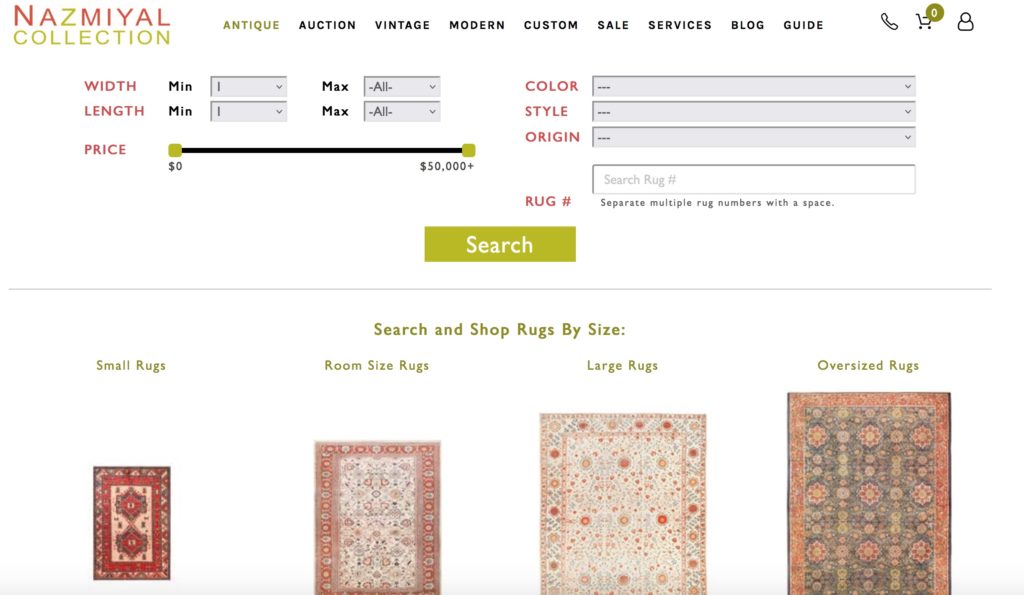
An image of the website’s homepage. Users may search by locale of origin, color, style, shape, and category.
When I push back on this a bit—”Not that I’m in the market but if I were going to spend $10,000 or more on a rug I’d want to touch it… don’t you think there’s something lost by not having this in-person interaction?”—he offers anecdote upon anecdote to defend the concept of online commerce in general and his model specifically: “Just last week I had a client from Chicago who had spent hours and hours with a dealer and found maybe six rugs he liked. Then he got in touch with me and found hundreds of the kind of rug he was looking for. He spent $30,000 when he was going to buy from the dealer for $28,000, and he swears up and down that there’s no comparison. Plus, I ship it to him for free with no taxes.”
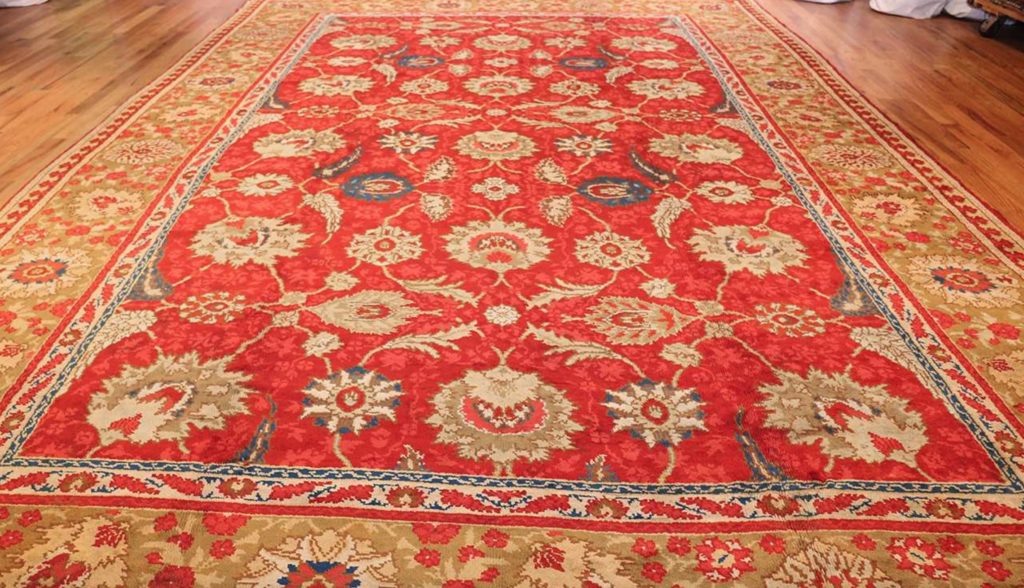
An antique arts and crafts Donegal Irish Rug. Sales price: $69,000. I don’t think they’d have this one at the Dealer’s in Chicago.
Selling from his online catalog works because of the excellent images, the precise organization, and the search-ability options. With 161 categories—mostly locales of origin but also categories for more modern rugs like “Pop Art” and “Art Deco”—the inventory might seem overwhelming, but each one loads with thumbnail images and corresponding description, dimensions, and price. Click one of these and you get several images from different angles along with a more detailed description, brief narrative, and contextual discussion of the rug’s design elements and cultural importance. As Nazmiyal says, this is exponentially more information than the “Schlepper” at the local dealer would be capable of offering: “The images are so crystal clear with multiple angles. There are over 150,000 pages of documentation. And it’s trusting the name. The concept of experiencing the rug in person just doesn’t work anymore. Who has the time?”
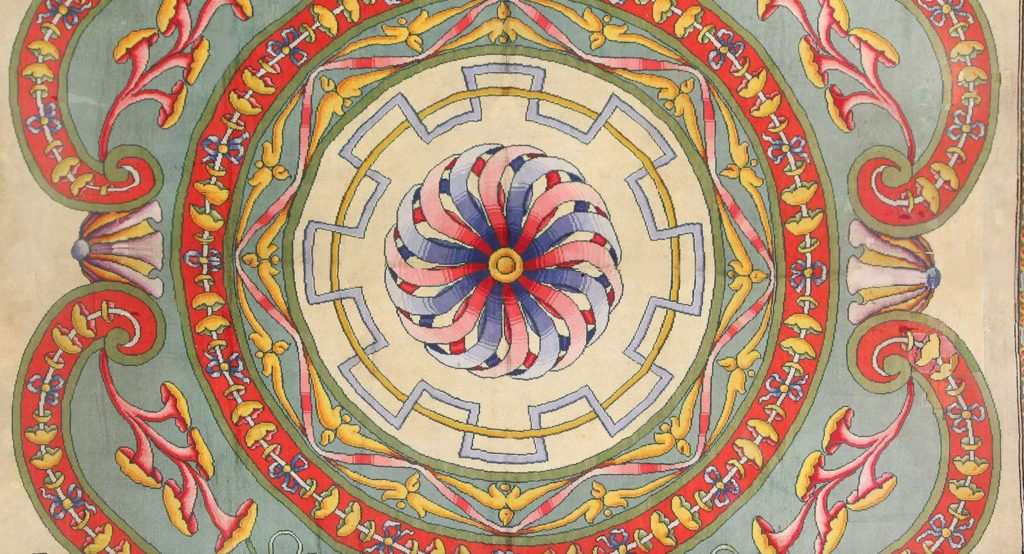
An oversized Spanish Art Deco carpet. From the website description: “The Art Deco movement in Spain was characterized by bold arches and Mediterranean influence. It took on a more classic appearance, often retaining elements such as Old World plaster reliefs and classic arched stained glass windows, as opposed to the angular streamlined shapes that are found throughout America and Europe.”
Nazmiyal also points out that just because he doesn’t meet a prospective buyer in person doesn’t mean they have no relationship: “The majority of the time there’s lots of back and forth… especially if somene’s spending more than $10,000; people want to make sure that the condition is good, that they can return it if they don’t like it.”
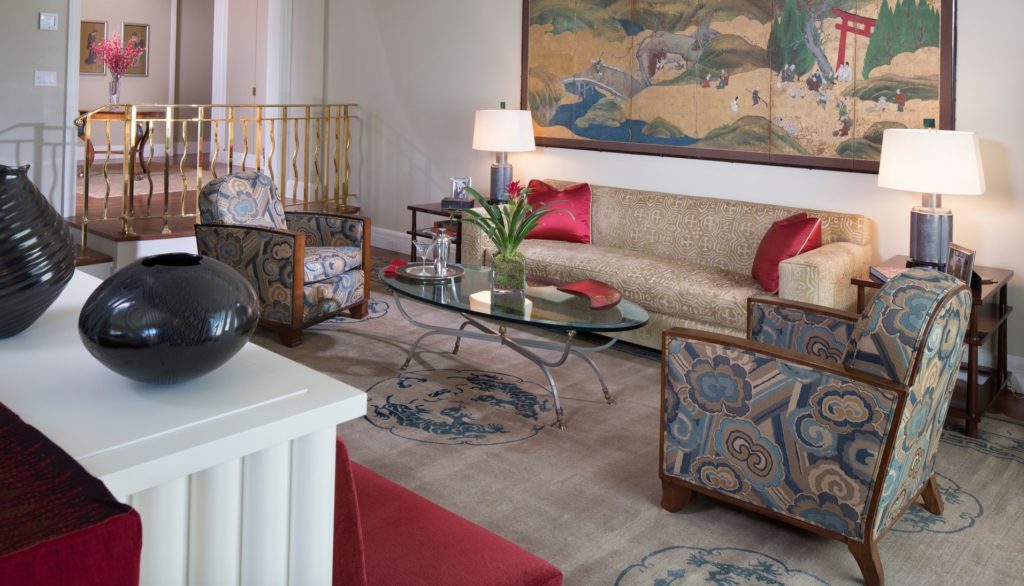
An antique Chinese rug with a spare color scheme and a dragon motif. Amazine correspondence between the rug and the chair upholstery.
For readers who aren’t convinced, Nazmiyal would suggest you take a look around the site and compare it to your most recent experience with retail. Not only will you encounter the “romanced” informational narratives of each and every rug, but also see them from multiple angles and varied degrees of detail. There’s also a user-friendly augmented reality function that allows buyers to virtually place and visualize any rug within their own space. And of course Nazmiyal stands by his rugs. So much of his business is built on relationships and mutual trust that there’s no sense in quibbling over disputes, which are an exceedingly rare occurrence.

A view of the augmented reality function. Users simply upload a photo of the room and they can virtually insert any rug on the website.
Nazmiyal clearly has a keen business sense (“a rug I love for $10,000 I might not love so much for $15,000”), but he also has a real affection for the art, the craft, the color, the design, the history. When I ask him if he has a favorite, he responds “All my rugs are my favorite. I buy them with my heart. If it moves me and gives me something different, then that’s the most phenomenal and fun part of this business. It’s always a good feeling to buy a rug.”

This one’s from the 17th. century. It shows some patina, but it’s in great condition overall for such an aged piece.
Rare and Notable
Among Nazmiyal’s staff are a team of writers (“rug scholars”) who compose the descriptions for the rugs, but Nazmiyal himself is familiar with each and every rug in his inventory. As an exercise, I randomly pulled up a couple of rugs and asked for his comments:
#70186, Antique Mongolian Dragon Rug, $32,000
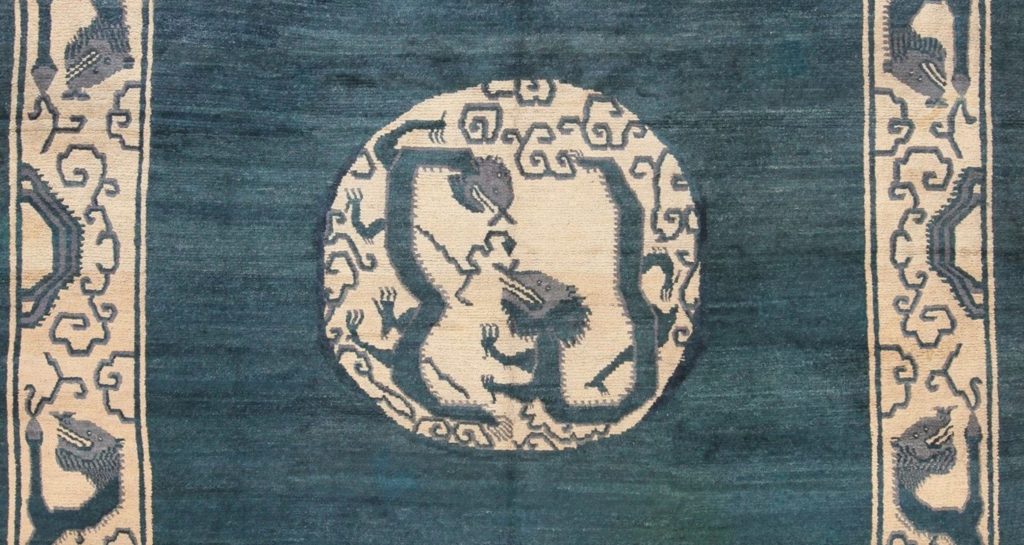
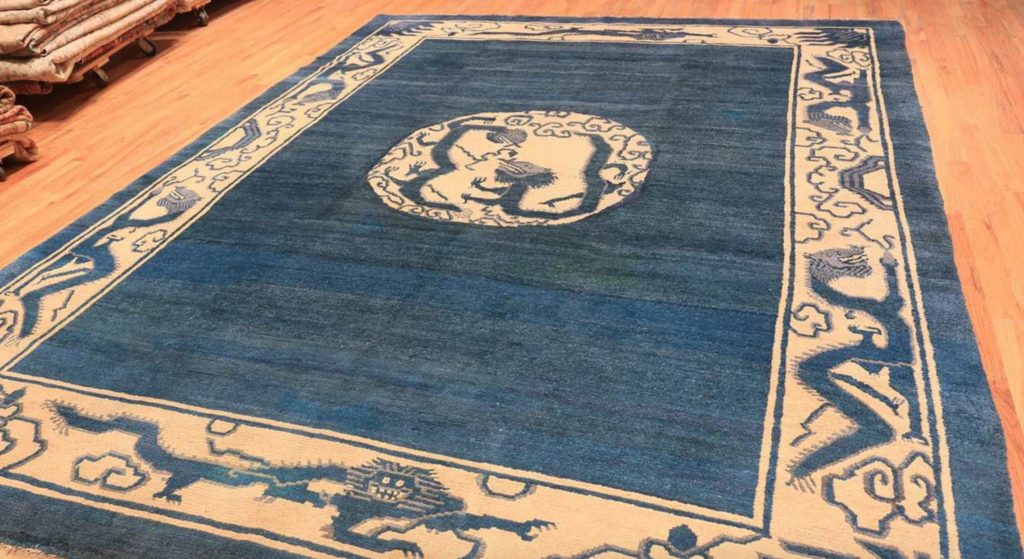
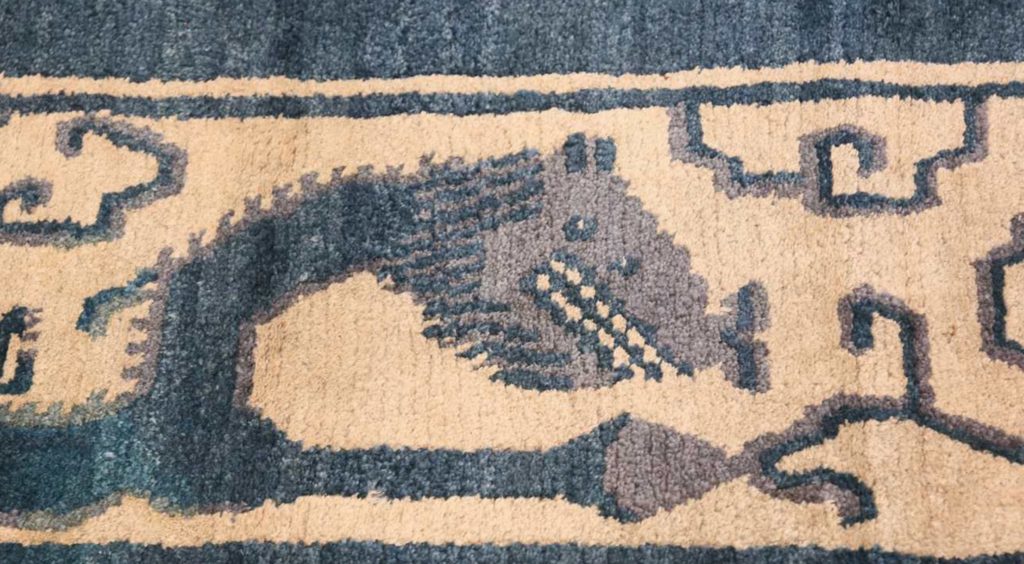
“It’s so rare to find Mongolian designs, and it’s fantastic how rare this piece is. The design is magnificent. You can see the blue background and the natural vegetable dye… how many times it changes. And you can see that it’s not just a solid blue but these beautiful blue-green variations. This is the beauty of the natural vegetable rug. And this rug is over 100 years old and it’s in mint condition.”
#70133, Antique Northwest Persian Rug, $38,000
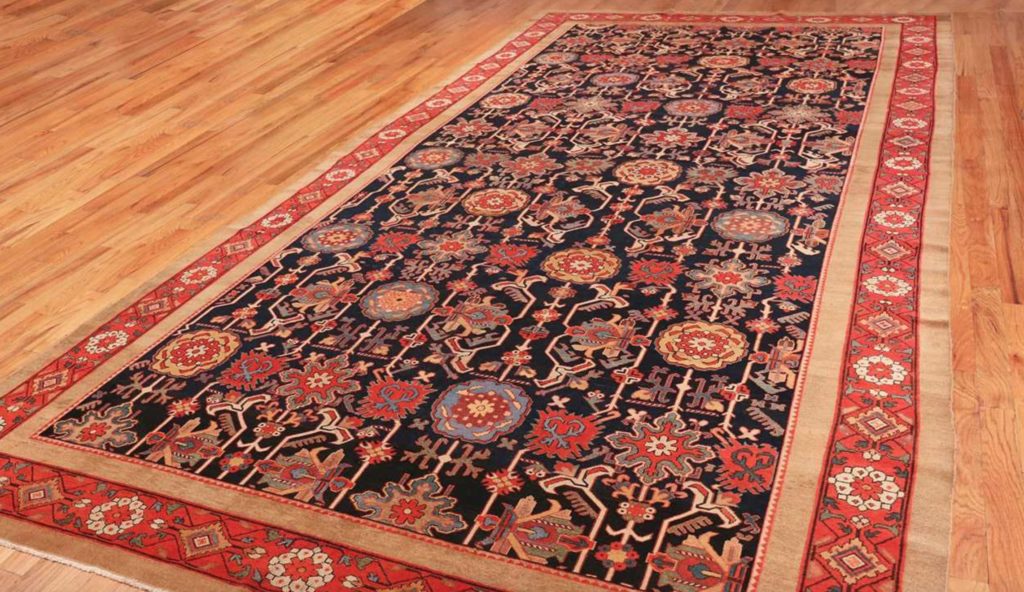
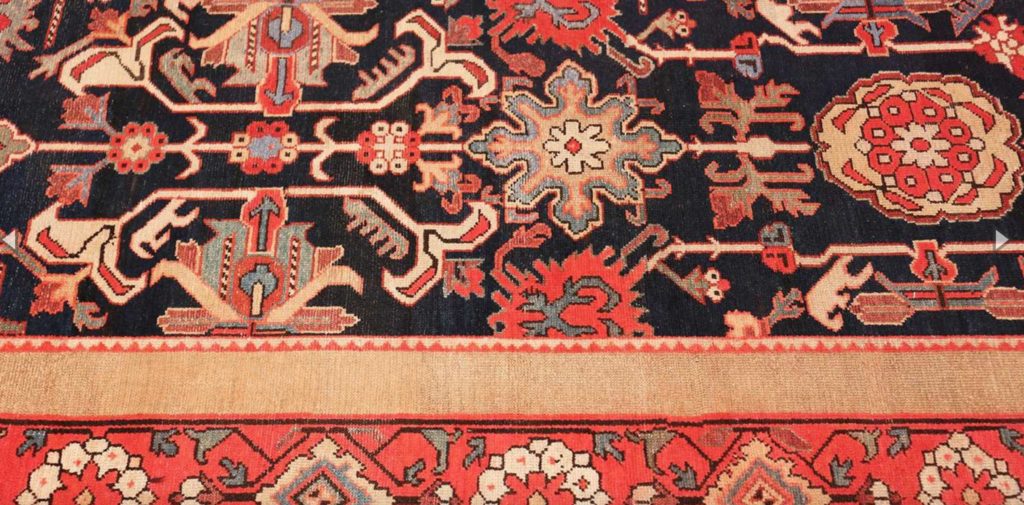
“I just bought this. Serapi rugs from Northwest Persia are mysterious because there’s really no country boundary. There’s lots of travel and interaction between the weavers and the different tribes. So this could be from the Caucasus or it could be from Azerbaijan. It makes for a hodgepodge of design but the most distinguishing quality is the harmony of classical colors and the amazing details.”
Art Rugs and Modern Swedish styles
Other highlights of Nazmiyal’s collection include his extensive selection of art rugs, which feature works by Picasso, Lichtenstein, Klee, Corneille, Matisse, Mondrian, and many more. This is a fast-growing segment for Nazmiyal, perhaps one of his fastest. And until recently it’s been kept under wraps. He says he began collecting these about 10 years ago but pretty much kept them hidden. Now it’s among the largest collection of art rugs in the world. “They’re selling like hotcakes… they’re almost all sold.”
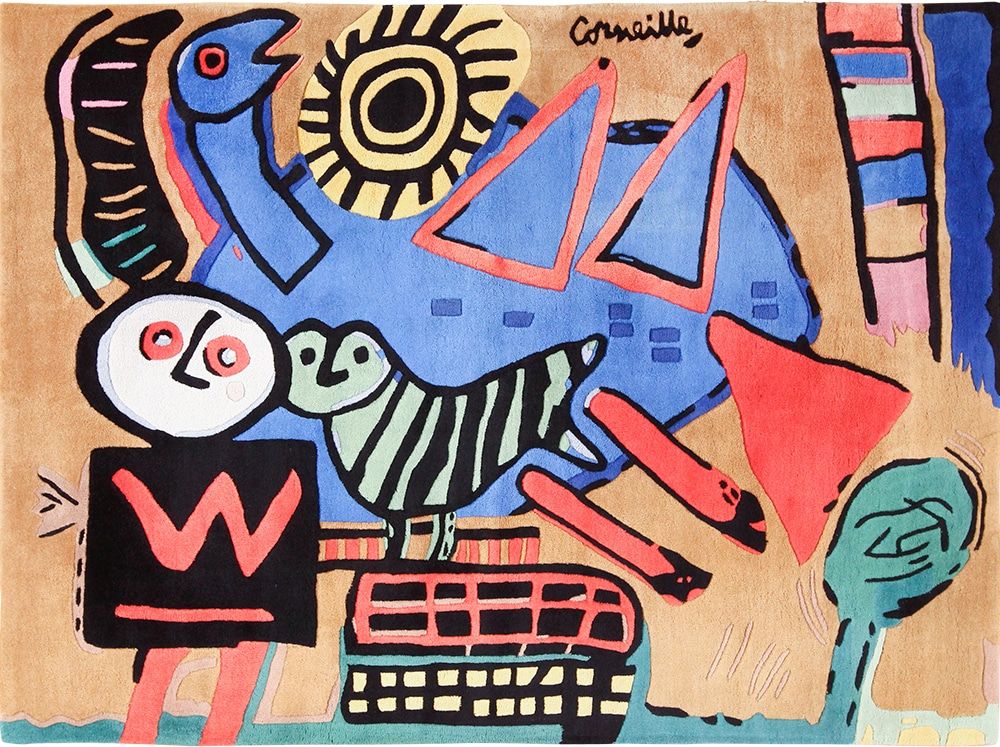
Vintage Art rug by the Dutch artist Corneille
Nazmiyal is also currently focused on his Swedish collection, which not only includes rare vintage and antique rugs of Swedish origin but also modern rugs designed by Nazmiyal. This foray into design highlights the modern nature of the Scandinavian aesthetic: “Unfortunately the price of antique and vintage Swedish rugs has really skyrocketed, so we’re producing this line to make them more accessible.” Following the Scandinavian tradition, the line emphasizes simple geometric designs and muted colors: “These are very versatile and affordable. And the Scandinavian aesthetic is a reliable way to bring together different design elements and create a unique look.”
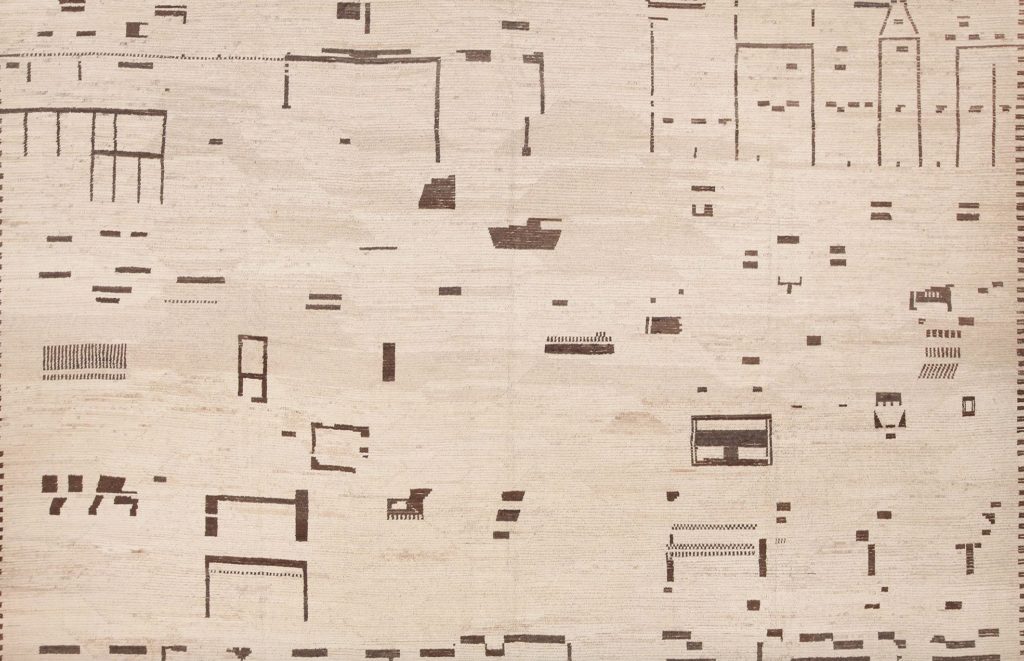
Modern rug in a vintage Swedish style—a rare foray into manufacturing for Nazmiyal
To find out more and browse the unprecedented inventory of Nazmiyal modern, vintage, and antique rugs, see Nazmiyal Antique Rugs. Also have a look at Nazmiyal Auctions for information on attending, buying, or selling rugs at these occasional auctions organized by Jason Nazmiyal. The next one is slated for March 13.
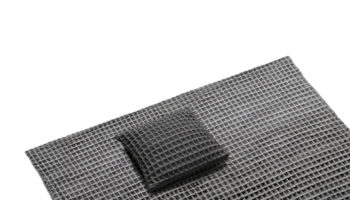
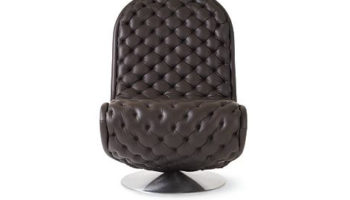
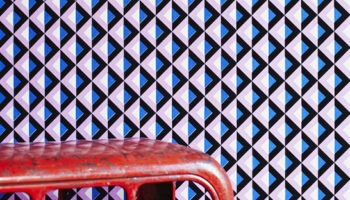

Leave a Reply